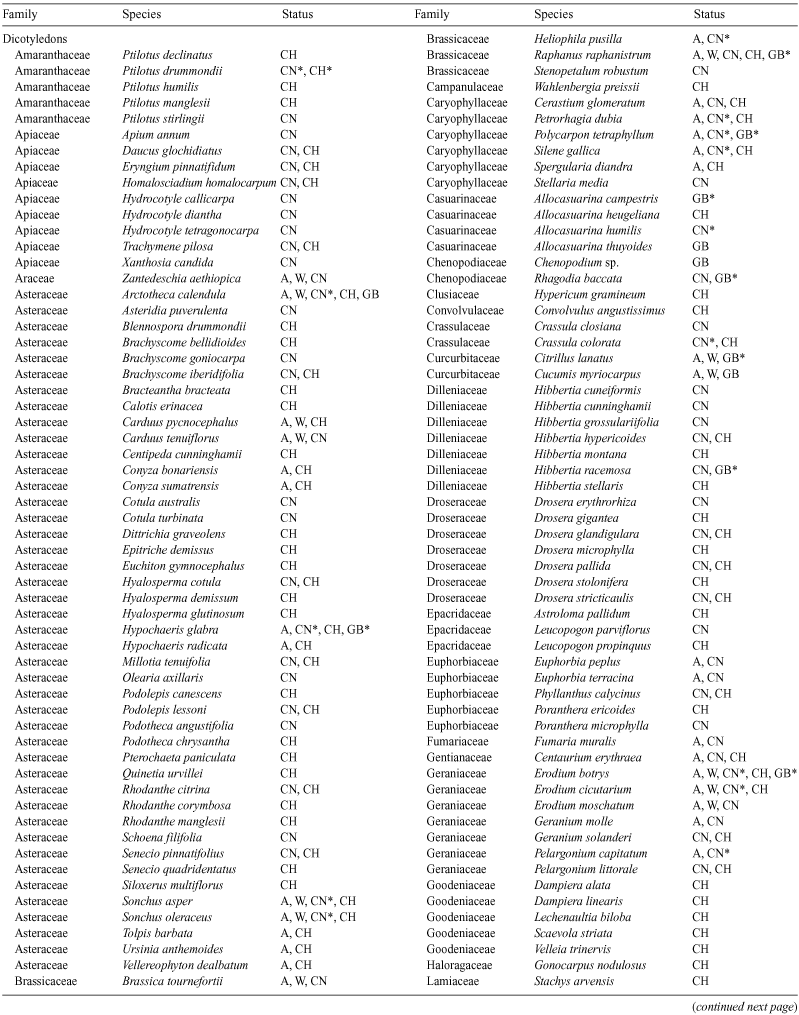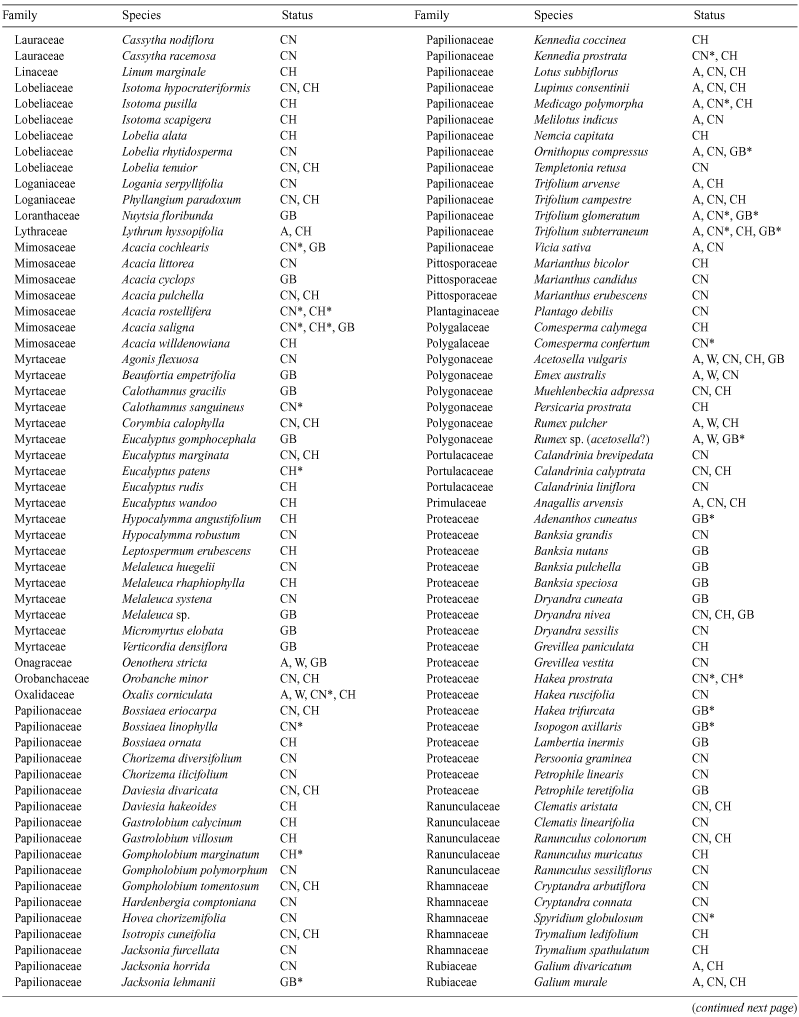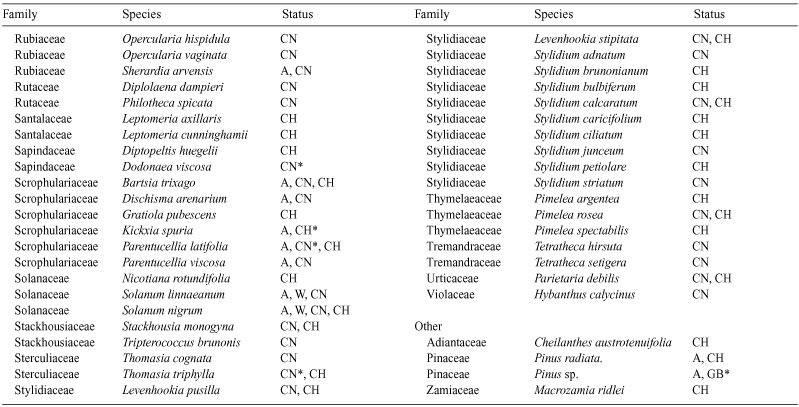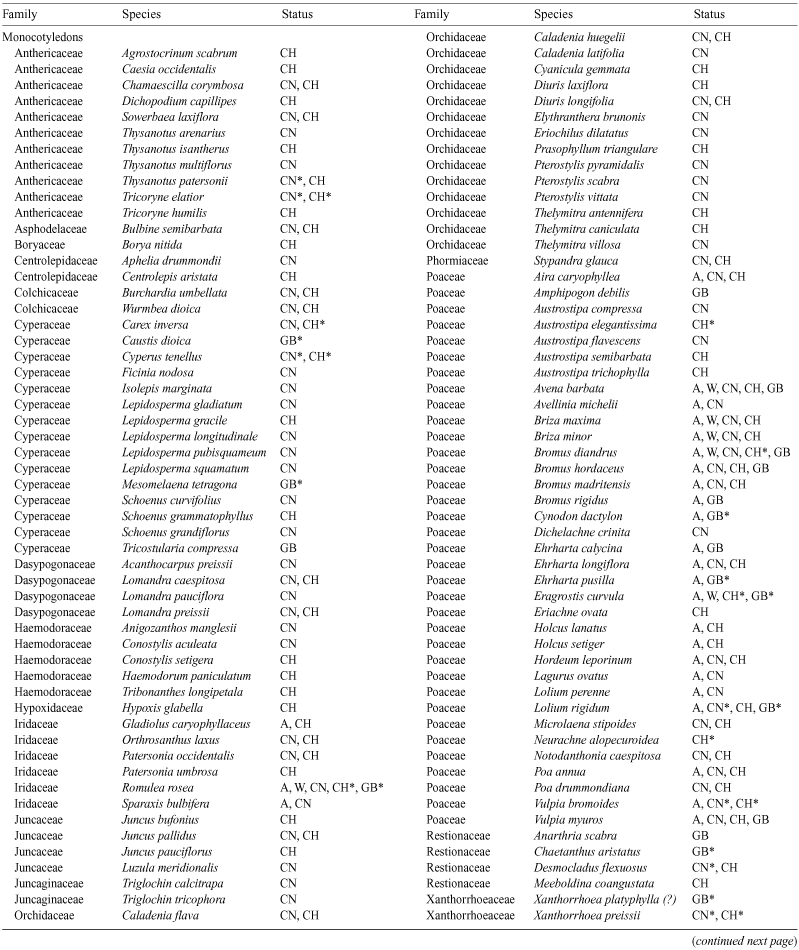Seasonal changes in the diet of the European rabbit (Oryctolagus cuniculus) from three different Mediterranean habitats in south-western Australia
Gary R. Martin A C , Laurie E. Twigg A and Lina Zampichelli A BA Vertebrate Pest Research Section, Department of Agriculture and Food Western Australia, 100 Bougainvillea Avenue, Forrestfield, WA 6058, Australia.
B Present address: C.Y. O’Connor College of TAFE, PO Box 498, Northam, WA 6401, Australia.
C Corresponding author. Email: gmartin@agric.wa.gov.au
Wildlife Research 34(1) 25-42 https://doi.org/10.1071/WR06044
Submitted: 1 May 2006 Accepted: 17 November 2006 Published: 27 February 2007
Abstract
Abstract. Seasonal changes in the diet of rabbits from three temperate (Mediterranean) areas in south-western Australia were identified using microscopic determination of the percentage occurrence of various food groups in sampled stomachs. The sites differed in soil type and in the availability of summer perennials, native vegetation bush remnants (size of, and number of plant species), improved pastures, and summer rainfall, and hence, enabled a comparison of the diet of rabbits from the different vegetation communities. Although the diet of these rabbits was quite flexible, with some switching in food items occurring between seasons, there were marked differences in the proportion of monocotyledonous and dicotyledonous species eaten in each habitat. There was a strong reliance on seeds (1–5 species) during late spring and summer in all three habitats. Guildford grass (Romulea rosea) leaf and corms were a major component of the diet in the two habitats where this species was common. Further, as a result of the summer die-off of pasture species, there was a shift in where rabbits sourced food items during winter and summer. Pasture species were eaten during winter, but rabbits fed mainly on those dicotyledons found only in the surrounding scrub during summer. This suggests that rabbits may impact negatively upon such remnant vegetation at this time. Rabbits in all three habitats consumed several plant species with high water content (>54%) during summer, presumably to help maintain their water balance. Rabbits also consumed the seeds and foliage of several weed/nuisance species in each habitat, but any role of rabbits in weed dispersal was not determined.
Acknowledgements
We thank all those who helped with various parts of this study, particularly Stuart Wheeler, Mike Robinson, Tim Lowe, Alan Eastman and the late Denis King. Mike Calver, John Bruce, Tim Lowe, Peter Thomson and two anonymous referees provided helpful comments on earlier drafts. Live-trapping and euthanasia was undertaken in accordance with the Western Australian Department of Agriculture’s (Australian) Code of Practice for Animal Experimentation.
Aplin, T. E. , Rhodes, L. , and King, D. R. (1983a). A botanical survey of a rabbit study area, Cape Naturaliste. Western Australian Herbarium Research Notes 9, 1–13.
Bhadresa, R. (1977). Food preferences of rabbits Oryctolagus cuniculus (L.) at Holkham sand dunes, Norfolk. Journal of Applied Ecology 14, 287–291.
| Crossref | GoogleScholarGoogle Scholar |
Cooke, B. D. (1982a). Reduction of food intake and other physiological responses to a restriction of drinking water in captive wild rabbits, Oryctolagus cuniculus (L.). Australian Wildlife Research 9, 247–252.
| Crossref | GoogleScholarGoogle Scholar |
Crawley, M. J. (1990). Rabbit grazing, plant competition and seedling recruitment in arid grassland. Journal of Applied Ecology 27, 803–820.
| Crossref | GoogleScholarGoogle Scholar |
Edwards, G. R. , and Crawley, M. J. (1999a). Effects of disturbance and rabbit grazing on seedling recruitment of six mesic grassland species. Seed Science Research 9, 145–156.
Holochek, J. L. , and Gross, B. (1982). Training needs for quantifying simulated diets from fragmented range plants. Journal of Range Management 35, 644–647.
King, D. R. , and Wheeler, S. H. (1985). The European rabbit in south-western Australia. I. Study sites and population dynamics. Australian Wildlife Research 12, 183–196.
| Crossref | GoogleScholarGoogle Scholar |
Myers, K. , and Bults, H. G. (1977). Observations on changes in the quality of food eaten by the wild rabbit. Australian Journal of Ecology 2, 215–229.
| Crossref | GoogleScholarGoogle Scholar |
Squires, V. R. , and Siebert, B. D. (1983). Botanical and chemical components of the diet and liveweight change in cattle on semi-desert rangeland in central Australia. Australian Rangeland Journal 5, 28–34.
| Crossref | GoogleScholarGoogle Scholar |
Williams, O. B. , Wells, T. C. , and Wells, D. A. (1974). Grazing management of Woodwalton Fen: seasonal changes in the diet of cattle and rabbits. Journal of Applied Ecology 11, 499–516.
| Crossref | GoogleScholarGoogle Scholar |
Wood, D. H. , and Lee, A. K. (1985). An examination of sodium, potassium and osmotic concentrations in blood and urine of arid-zone rabbits in seasonal field conditions and in the laboratory. Australian Wildlife Research 12, 173–182.
| Crossref | GoogleScholarGoogle Scholar |

|

|

|



